As 2014 draws to a close, there is still time to reduce your 2014 tax bill and plan ahead for 2015. This article highlights several potential tax-saving opportunities for owners of businesses operating as S corporations or limited liability companies.
Deferring Income into 2014
Deferring income to the next taxable year is a time-honored year-end planning tool. If you expect your taxable income to be higher in 2014 than in 2015, or if you anticipate being in the same or a higher tax bracket in 2014 than in 2015, you may benefit by deferring income into 2015.
Accelerating Income into 2014
You may benefit from accelerating income into 2014. For example, you may anticipate being in a higher tax bracket in 2015, or perhaps you need additional income in 2014 to take advantage of an offsetting deduction or credit that will not be available to you in future tax years. Note, however, that accelerating income into 2014 will be disadvantageous if you expect to be in the same or lower tax bracket for 2015. If you report income and expenses on a cash basis, issue bills and attempt collection before the end of 2014. Also, see if some of your clients or customers are willing to pay for January 2015 goods or services in advance. Any income received using these steps will shift income from 2015 to 2014.
Common Business Deductions
- Self-Employed Health Insurance Premiums: Self-employed individuals are allowed to claim 100% of the amount paid during the taxable year for insurance that constitutes medical care for themselves, their spouses, and their dependents as an above-the-line deduction, without regard to the general 10%-of-AGI floor.
- Equipment Purchases: If you purchase equipment, you may make a “Section 179 election,” which allows you to expense (i.e., currently deduct) otherwise depreciable business property. For 2014, you may elect to expense up to $25,000 of equipment costs (with a phase-out for purchases in excess of $200,000) if the asset was placed in service during 2014.
- Bad Debts: You can accelerate deductions into 2014 by analyzing your business accounts receivable and writing off those receivables that are totally or partially worthless. By identifying specific bad debts, you should be entitled to a deduction. You may be able to complete this process after year-end if the write-off is reflected in the 2014 year-end financial statements.
Popular Business Credits
- Small Employer Pension Plan Startup Cost Credit: For 2014, certain small business employers that did not have a pension plan for the preceding three years may claim a nonrefundable income tax credit for expenses of establishing and administering a new retirement plan for employees. The credit applies to 50% of qualified administrative and retirement-education expenses for each of the first three plan years. Maximum credit is $500 per year.
- Credit for Employee Health Insurance Expenses of Small Employers: Eligible small employers are allowed a credit for certain expenditures to provide health insurance coverage for their employees. Generally, employers with 10 or fewer full-time equivalent employees (FTEs) and an average annual per-employee wage of $25,400 or less are eligible for the full credit. The credit amount begins to phase out for employers with either 11 FTEs or an average annual per-employee wage of more than $25,400. The credit is phased out completely for employers with 25 or more FTEs or an average annual per-employee wage of $50,800 or more. Beginning in 2014, the credit is available on a sliding scale for up to 50% of the employer’s contribution toward employee health insurance premiums is only allowable if the health insurance is purchased through a SHOP Exchange, and is only available for two consecutive taxable years.
- Employer-Provided Child Care Credit: For 2014, employers may claim a credit of up to $150,000 for supporting employee child care or child care resource and referral services. The credit is allowed for a percentage of “qualified child care expenditures,” including for property to be used as part of a qualified child care facility, for operating costs of a qualified child care facility, and for resource and referral expenditures.
There is still time to implement these strategies to minimize your 2014 tax liability and plan for 2015. Contact us today if you have any questions about tax-saving opportunities.

